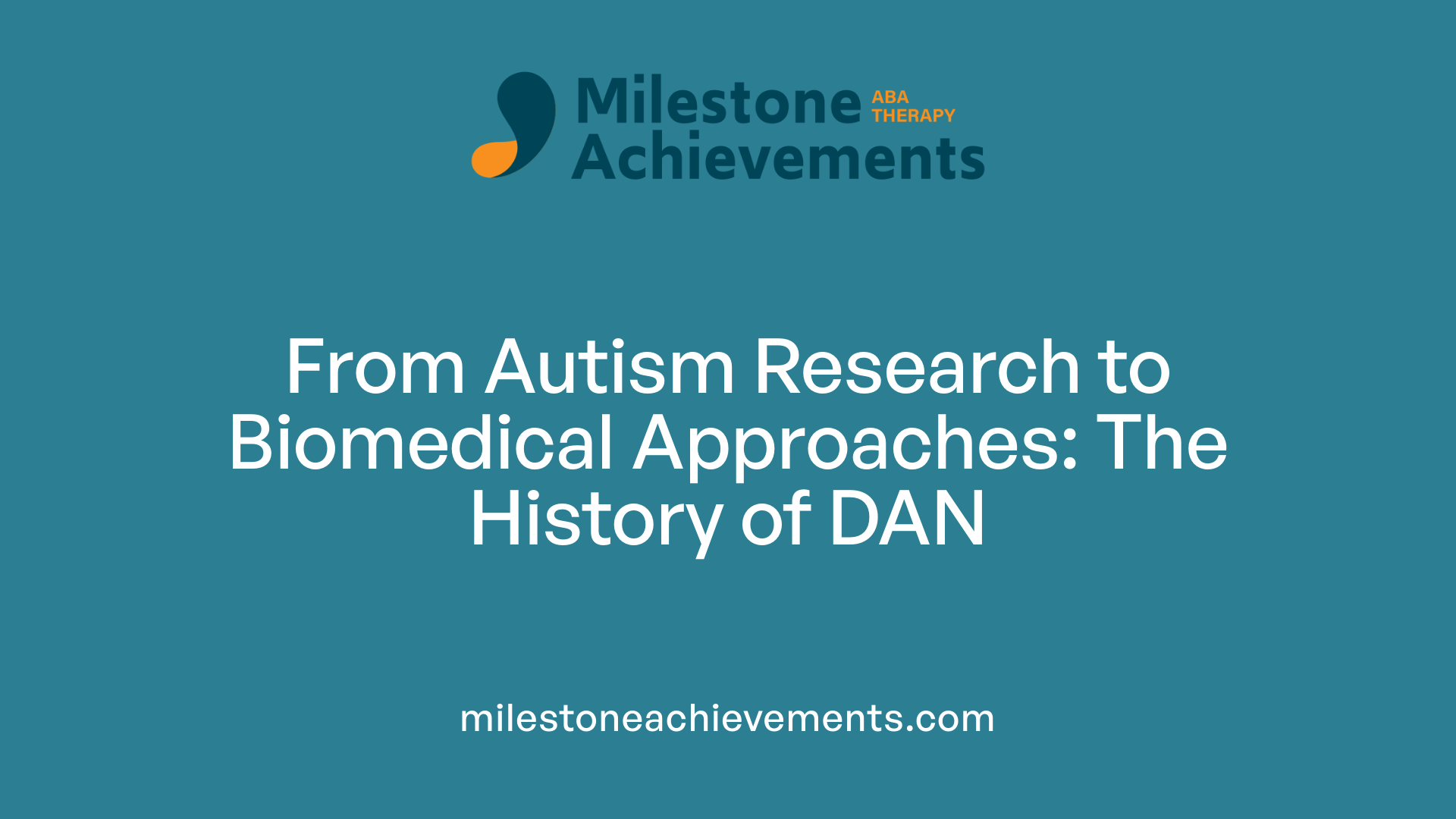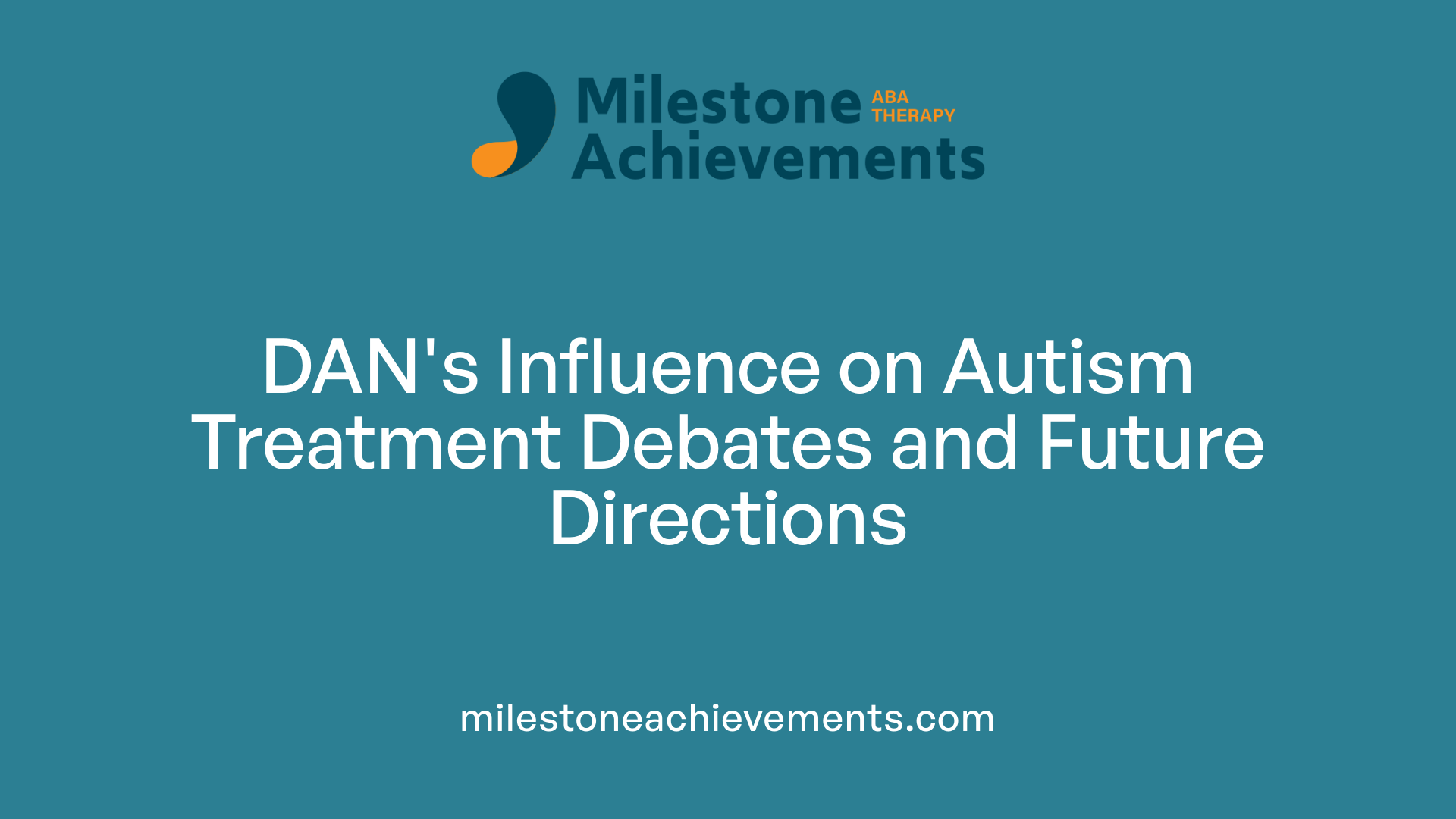
What Is Defeat Autism Now?
Unraveling the Origins and Impact of DAN in Autism Care
Introducing Defeat Autism Now: A Controversial Approach to Autism Treatment
Defeat Autism Now (DAN) represents a distinct movement within the autism community that emerged in the mid-1990s. Rooted in biomedical experimentation, DAN aimed to address the underlying biological aspects of autism spectrum disorder (ASD) rather than just managing symptoms through behavioral techniques. This article explores the origins, principles, controversies, and evolution of DAN, highlighting its role within the broader context of autism research and treatment.
The Historical Roots and Development of DAN

What are the origins and historical background of the DAN movement?
The Defeat Autism Now! (DAN) movement has its roots in the scientific and advocacy efforts of the Autism Research Institute (ARI), which was established in 1967 by Dr. Bernard Rimland. Originally, ARI aimed to dispel misconceptions that autism was caused by poor parenting and to promote research into the neurological basis of autism.
In the 1960s and 1970s, the focus was primarily on behavioral therapies and mainstream approaches. However, by the 1990s, a new perspective emerged within the autism community, emphasizing biological and biochemical factors.
The term 'Defeat Autism Now!' was introduced in 1995 by ARI as part of a broader initiative to explore biomedical treatments for autism. This approach sought to address underlying issues such as immune dysregulation, metabolic abnormalities, and gastrointestinal problems.
The movement was significantly influenced by Dr. Rimland’s vision of understanding autism as a complex, whole-body disorder rather than a condition solely managed by behavioral therapies. This paradigm shift aimed to promote treatments targeting biochemical irregularities, environmental toxins, and nutritional deficits associated with autism.
While the original focus was on understanding the biological aspects, the DAN approach also incorporated personalized intervention strategies based on laboratory testing and scientific research. Over time, the movement grew in prominence, advocating for therapies like detoxification, dietary modifications, and nutritional supplementation.
Despite its contributions, the DAN movement has also faced criticism due to its promotion of unproven treatments and controversies surrounding some practices. Nevertheless, its emphasis on individualized, biologically-focused approaches marked an important chapter in autism research and therapy development.
Philosophy and Methodology of DAN

What principles and methodologies define the DAN approach to autism treatment?
The Defeat Autism Now (DAN) approach is rooted in biomedical principles that focus on understanding and treating the underlying physiological abnormalities associated with autism spectrum disorders. It emphasizes that autism is not solely a behavioral condition but involves complex biological dysfunctions, such as immune dysregulation, gastrointestinal issues, metabolic irregularities, and toxic exposures.
At its core, DAN aims to identify and correct these dysfunctions through a personalized, data-driven treatment plan. This includes comprehensive testing—like blood chemistry, stool analysis, and food allergy assessments—to gather detailed information about each child's unique condition. Based on these results, clinicians tailor interventions that may involve dietary changes, nutritional supplements, detoxification procedures, and addressing gut health.
While the primary focus of DAN is biomedical, it also incorporates behavioral strategies such as Applied Behavior Analysis (ABA) to support developmental progress. The methodology advocates for interventions that are aligned with current scientific findings, emphasizing careful monitoring, re-evaluation, and adjustment of treatments based on ongoing data collection and response.
This individualized approach represents a shift from standardized protocols to one that considers the child's specific biochemical profile, aiming to improve overall health as a pathway to reducing autism symptoms. Despite criticisms and legal issues associated with some practices, the DAN philosophy continues to influence how many practitioners adopt a holistic, scientific, and personalized view of autism treatment.
Controversies and Criticisms Surrounding DAN

What controversies and criticisms have been raised against the DAN movement?
The Defeat Autism Now! (DAN) program has been the subject of considerable debate within the medical and scientific communities. One major point of contention is the lack of rigorous scientific validation for many of its treatment approaches. Although DAN promotes individualized biomedical treatments aiming to address underlying biological factors such as immune dysregulation and gut health, these treatments often rely heavily on anecdotal parental reports rather than evidence-based research.
A particularly controversial aspect of DAN’s claims is its assertion that vaccines, particularly the mercury-containing preservative thimerosal, are a cause of autism. Scientific investigations, including numerous epidemiological studies, have found no credible evidence linking vaccines to autism. Regulatory agencies worldwide have dismissed these claims, emphasizing that vaccines are safe and vital to public health.
Furthermore, some practitioners associated with DAN engaged in unethical practices, including unapproved treatments and the promotion of unsafe procedures like chelation therapy without proper medical oversight. These practices have resulted in regulatory actions, such as the revocation of medical licenses, to protect patients from harm.
Overall, criticisms highlight that DAN’s approach prioritizes experimental treatments over validated scientific methods, raising concerns about safety and efficacy. The controversy underscores the importance of evidence-based medicine and regulatory oversight to ensure children’s health and safety.
Evolution of Biomedical Treatments in Autism Including DAN
How has biomedical treatment for autism evolved in relation to the DAN movement?
Biomedical treatments for autism have undergone significant changes since the inception of the Defeat Autism Now! (DAN) movement. Originally, DAN focused on nutritional and dietary interventions, detoxification, and addressing presumed chemical toxicant exposures, especially mercury from vaccines. This approach was based on the idea that biochemical irregularities could be identified and corrected through personalized treatment plans.
Over time, scientific research has expanded our understanding of autism as a complex interplay of genetic, biochemical, environmental, and immune factors. This has led to an evolution beyond the initial dietary and detox strategies.
Modern biomedical approaches now incorporate advanced insights into mitochondrial dysfunction, immune dysregulation, and genetic predispositions. For instance, treatments like methylcobalamin and folinic acid are used to address metabolic irregularities tied to genetic mutations such as MTHFR. Antioxidants and other targeted therapies are employed to combat oxidative stress, which is now recognized as influential in autism.
Laboratory testing plays a crucial role in guiding these treatments. Tests like blood chemistry, stool analysis, and genomic profiling provide personalized data that inform specific interventions. Additionally, ongoing monitoring with retesting helps evaluate the effectiveness of therapies, ensuring a tailored approach.
Despite these advances, debates continue in the scientific community regarding the efficacy and safety of many biomedical interventions. While some studies support treatments like microbiome modulation and immune therapies, larger, well-controlled clinical trials are needed to establish their value conclusively.
This progression reflects a shift from a one-size-fits-all approach towards evidence-based, physiological strategies. These efforts aim to complement behavioral therapies by addressing underlying biological conditions, leading to more comprehensive care for individuals with autism.
The Broader Impact and Legacy of DAN in Autism Discourse

How does DAN fit within the broader context of autism research and treatment discussions?
Defeat Autism Now! (DAN) has played a significant role in shaping discussions around autism treatment by promoting a biomedical approach that emphasizes addressing underlying physiological issues. It focused on identifying and mitigating dysfunctions in neural, immune, and digestive systems through personalized interventions like dietary modifications, detoxification, and nutritional supplements.
The approach within DAN expanded the spectrum of treatment options for families seeking alternatives to traditional therapies. It actively involved parents in treatment decisions, fostering a sense of empowerment and engagement. However, its methodologies often lacked the rigorous scientific validation expected in mainstream medicine.
Over time, mainstream medical organizations have questioned the safety and efficacy of many DAN treatments, especially chelation and detoxification protocols, which lack sufficient scientific backing and can sometimes be harmful. This has led to ongoing debates in the autism community about the balance between innovative, individualized treatments and evidence-based practices.
DAN's legacy highlights the tension between alternative treatments driven by parental observations and experiences and the scientific standards upheld by the broader medical community. This debate reflects larger issues about how society views neurodiversity, the importance of rigorous research, and the need for respectful, informed discussions about autism care. Ultimately, DAN's influence persists in encouraging a more holistic view of autism that considers medical, nutritional, and environmental factors, even as it faces scrutiny and criticism.
Bridging Science and Controversy in Autism Care
While the DAN movement has significantly influenced the exploration of biomedical interventions for autism, its controversial history underscores the importance of scientific validation, regulatory oversight, and ethical practices. Recognizing the complex biological basis of ASD, current trends aim to integrate rigorous scientific research with individualized, compassionate care—striving to improve outcomes while safeguarding safety and evidence-based practice.
References
- Autism Research Institute
- A Critical Look at Defeat Autism Now! and the "DAN! Protocol"
- What is Defeat Autism Now (DAN)? | Inspire Health
- Defeat Autism Now! - Dr. Amber Brooks
- Our Bio-Medical Recommendations
- Autism Treatment Overview - medical options for wellness
- Autism Spectrum Disorder as a Model for Thinking Differently About ...
- [PDF] DAN! think-tank: making strides toward treating autism ...


Partner with us on your child's journey
Milestone Achievements offers evidence-based ABA therapy to help children with autism reach their full potential. Together we’ll set meaningful goals and celebrate progress every step of the way.
Start ABA Services Today


